The strength and resilience of a stitch are pivotal in sewing, and one stitch stands out as a paragon of durability the backstitch.
Renowned for its robust construction, the backstitch surpasses other hand stitches in creating secure and enduring seams.
Its versatility extends beyond mere functionality, finding application in attaching patches, crafting topstitches, and reinforcing high-stress areas in garments.
Aesthetic appeal accompanies its strength, providing a neat, polished appearance suitable for practical and decorative projects.
Compatible with various fabrics, especially those with a visible even weave, the backstitch emerges as a versatile and indispensable technique, embodying the epitome of strength in hand sewing.
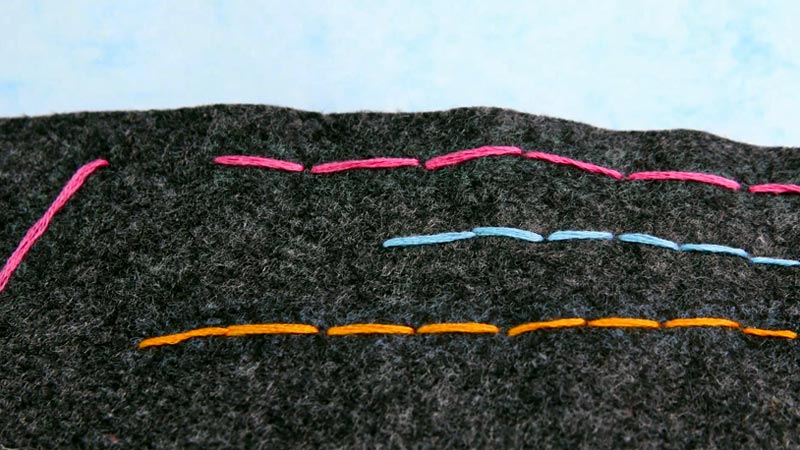
What Is the Strongest Stitch?
The backstitch is often considered one of the most robust and versatile hand stitches in sewing.
This stitch is valued for its durability and ability to withstand stress, making it a popular choice for various sewing and garment construction applications.
Characteristics of the Backstitch:
Strength
The backstitch is known for its exceptional strength and durability, making it a cornerstone in sewing for creating robust and long-lasting seams.
The mechanics of the backstitch involve each stitch penetrating the fabric multiple times, resulting in a secure and tightly interlocked structure.
This characteristic ensures that the seam is less prone to unraveling or breaking, even under stress and strain.
Whether used in garment construction or other fabric projects, the backstitch consistently proves its reliability in maintaining the integrity of the stitched area over time.
Visibility
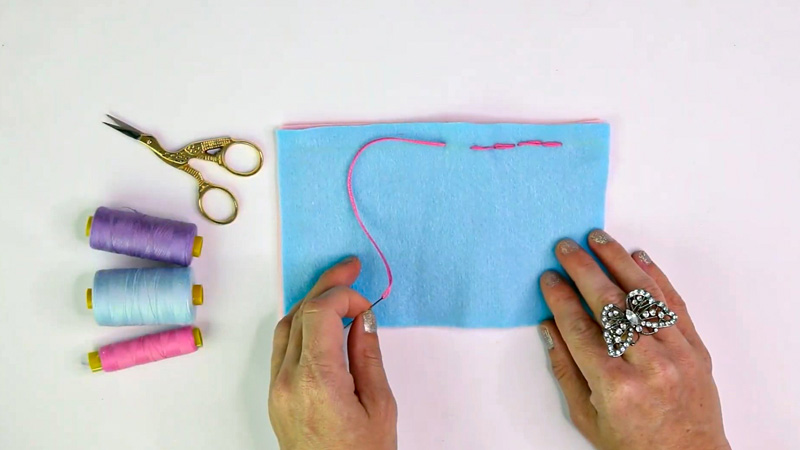
In addition to its strength, the backstitch offers a visually appealing and tidy appearance. Its continuous stitching line is polished, making it suitable for practical and decorative sewing projects.
The backstitch’s neatness enhances the sewn item’s overall aesthetics, contributing to a professional and well-crafted look.
This visual appeal makes the backstitch versatile, seamlessly blending functionality with an aesthetically pleasing finish in a wide range of sewing applications.
Versatility
The backstitch’s versatility is critical in its widespread use in sewing. Beyond its primary role in creating seams, the backstitch finds application in various sewing tasks.
It is a preferred method for attaching patches securely, providing a stable foundation for embellishments or repairs.
Additionally, the backstitch excels in creating topstitches, adding strength and a polished finish to the fabric’s surface.
Its adaptability allows it to seamlessly transition between functional and decorative stitching, making it a valuable technique in diverse sewing projects.
Reinforcement
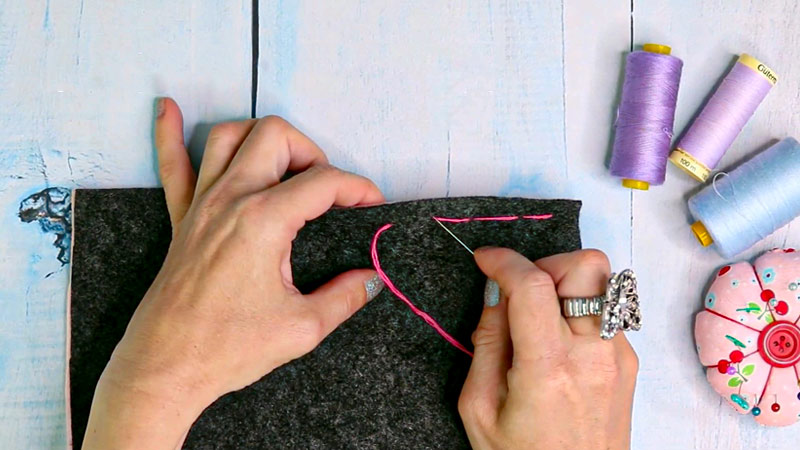
The backstitch emerges as a valuable tool for reinforcement in areas of garments that endure substantial stress.
For instance, in the crotch of pants or the underarms of sleeves, where fabric experiences repeated stretching and movement, the backstitch is a reliable reinforcement measure.
Distributing tension evenly and preventing localized strain significantly contributes to preventing seam failures and extends the overall lifespan of the garment.
This reinforcement capability makes the backstitch an essential technique for enhancing the durability of high-stress regions in sewn items.
Compatibility with Various Fabrics
The backstitch’s effectiveness spans a broad spectrum of fabrics, with a notable affinity for those featuring a visible even weave.
Fabrics such as cotton, linen, denim, and canvas respond exceptionally well to the backstitch due to its ability to penetrate and securely hold the fibers.
The stitch’s compatibility with diverse fabrics ensures its applicability in various sewing projects, from lightweight and delicate materials to heavy-duty and sturdy textiles.
This adaptability underscores the backstitch as a go-to choice for seam construction on various fabric types, making it a versatile and reliable hand-stitching technique.
What Is the Strongest Stitch on a Sewing Machine?
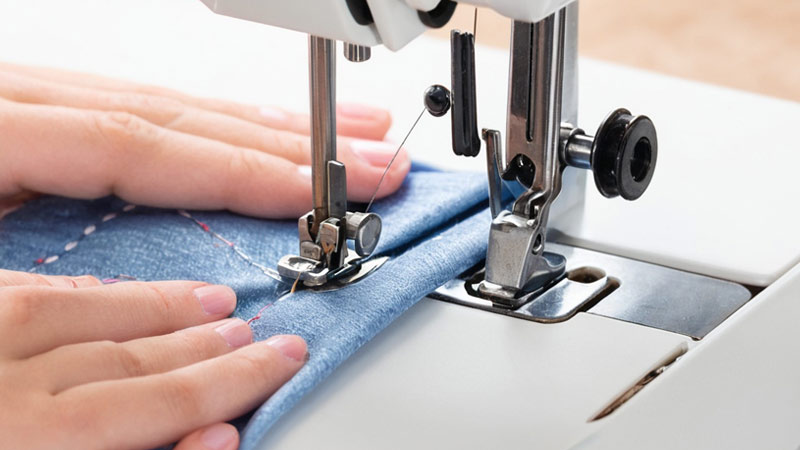
The most robust stitch on a sewing machine is the straight stitch. This robust stitch features a continuous line formed by the upper thread and the bobbin thread interlocking regularly.
The strength of the straight stitch lies in its simplicity and efficiency, creating a secure and durable seam.
The upper thread runs from the spool through the needle, while the bobbin thread comes from below the fabric. These threads intertwine consistently, forming a tight bond contributing to the stitch’s resilience.
The straight stitch is highly versatile and suitable for various sewing applications, including seam construction, topstitching, and edge finishing.
Its strength is further enhanced by the ability to adjust the stitch length, allowing for customization based on the fabric type and project requirements.
As a foundational stitch in sewing, the straight stitch provides stability and durability, making it an essential choice for creating lasting and reliable seams on a sewing machine.
How to Sew a Backstitch?
Sewing a backstitch is a fundamental hand-sewing technique that creates a solid and durable seam. It’s commonly used in various sewing projects, from garment construction to basic mending.
The backstitch is known for its strength and flexibility, making it suitable for joining fabrics securely.
Here’s a step-by-step guide on how to sew a backstitch:
Materials and Tools:
- Fabric pieces to be sewn together
- Needle
- Thread (matching the fabric or your desired color)
- Scissors
- Thimble (optional, but recommended for added protection)
Steps to Sew a Backstitch:
Thread the Needle
Begin by selecting a suitable thread for your project, considering color and thickness. The thread length should generally be between 18 and 24 inches, allowing you to sew reasonably without causing tangles or breakage.
Threading the needle can sometimes be a delicate task, so if needed, use a needle threader to ease the process.
Once threaded, tie a knot at the end of the thread, ensuring it’s secure enough to withstand the tension during sewing. A well-tied knot prevents the thread from slipping through the fabric as you work.
Position the Fabric
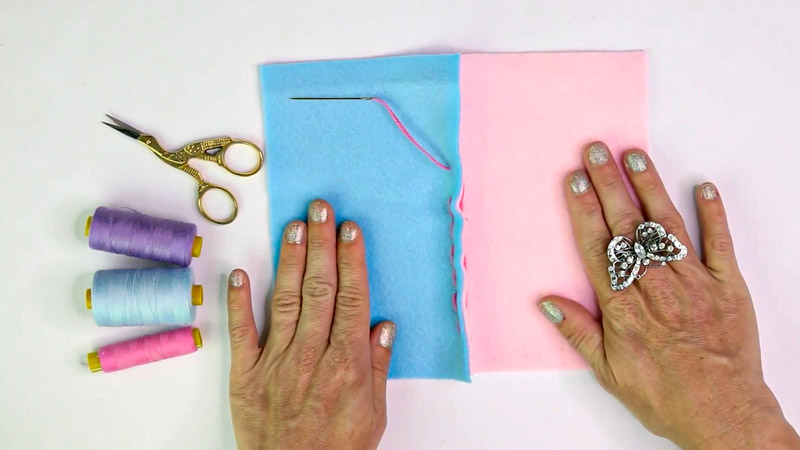
Carefully align the fabric pieces you intend to sew, paying close attention to pattern matches or grain lines if applicable. Pinning the fabric together at intervals can help maintain alignment during the sewing process.
Smooth out any wrinkles or folds to ensure a clean and even seam. Taking the time to prepare the fabric properly at this stage contributes significantly to the overall quality of your sewing project.
Start from the Wrong Side
Select a starting point on the wrong side of the fabric, considering seam allowances and the overall design.
The initial stitches, including the knot, will be concealed by beginning on the wrong side when the project is complete.
Gently insert the needle from the wrong side to the right side, bringing it up through the layers of fabric.
Be mindful of where the knot is positioned, ensuring it’s tucked away and won’t be visible on the finished garment or item.
Create the First Stitch
When creating the first stitch, aim for a small and controlled distance between the starting point and the needle’s entry. This initial gap sets the foundation for the subsequent backward stitches.
Confirm that the needle passes through both layers of fabric to create a secure and stable connection. The first stitch is crucial, setting the tone for the entire seam.
Backstitch
As you execute the backward motion of the backstitch, consider the desired strength and appearance of the seam.
Depending on your project, you may opt for shorter or longer backward stitches. The backward movement effectively locks the stitches in place, enhancing the overall durability of the seam.
The rhythmic interplay of forward and backward motions creates a continuous, strong line of stitches. Practice the backstitch to achieve a smooth and even result.
Repeat the Process
Maintaining consistency in stitch length is critical to achieving a professional look. Regularly check the length of your stitches, using a ruler or seam gauge if necessary.
The repetitive nature of the backstitch allows you to establish a rhythm, making the process more efficient over time.
Stay focused on the alignment and tension of your stitches, ensuring an even appearance throughout the entire seam.
End with a Backward Stitch
As you approach the end of your sewing line or project, finish with a backward stitch to secure the last portion of the seam. This final backward stitch acts as a reinforcement, preventing the stitches from unraveling.
Once the last stitch is complete, tie a knot on the fabric’s wrong side to secure the seam further. Please take a moment to inspect the entire seam, ensuring it meets your quality standards.
Trim Excess Thread
After securing the seam with a knot, use sharp scissors to trim any excess thread. Leaving a small tail prevents the knot from loosening or slipping through the fabric.
Be precise in your cutting, ensuring you don’t accidentally snip the stitches or fabric. Attention to detail during this final step adds a polished and professional finish to your sewing project.
Advantages of Using a Backstitch
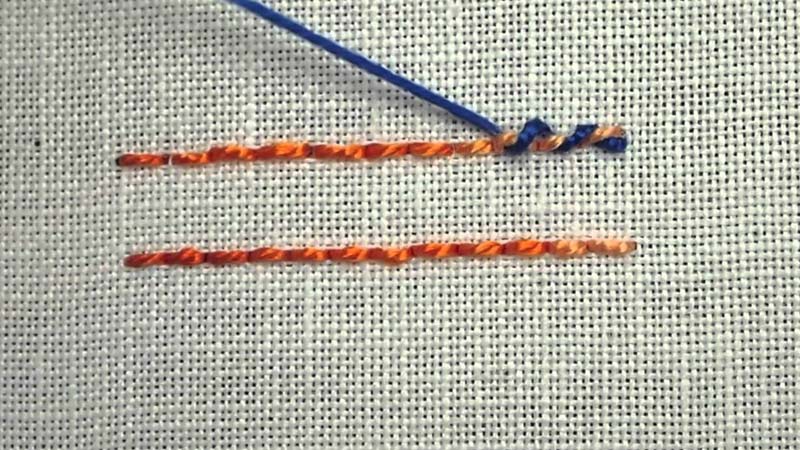
Using a backstitch in sewing offers several advantages, making it a popular and reliable technique for creating solid and durable seams.
Here are some key advantages of using a backstitch in your sewing projects:
Strength and Durability
The backstitch excels in providing unmatched strength to seams. Each stitch reinforces the previous one, creating a durable and resilient bond.
This feature is precious in high-stress areas, such as the inseams and crotch areas of pants, ensuring the longevity of the finished garment.
Prevents Unraveling
Unraveling seams can be a common issue in sewing. The backstitch’s backward motion securely anchors each stitch, preventing the unraveling that may occur with other sewing techniques.
This quality is especially beneficial for securing the edges of fabrics, minimizing the chances of fraying over time.
Versatility
The backstitch is versatile and adaptable to various fabrics, from delicate silks to heavy denim.
Its reliability makes it a go-to choice for various sewing projects, including clothing construction, home decor, and quilting. Maintaining its strength across different fabric types adds to its universal appeal.
Professional Appearance
The aesthetic appeal of the backstitch lies in its ability to create a clean and professional finish. The even and unbroken line of stitches on the fabric’s right side enhances the finished project’s overall look.
This makes the backstitch a preferred option for visible seams, topstitching, and any areas where a polished appearance is crucial.
Control Over Stitch Length
Sewers appreciate the backstitch for its flexibility in stitch length. This control allows for customization based on the specific demands of a project.
Whether creating fine details or securing large seams, the backstitch provides the freedom to adjust stitch length, accommodating various fabric weights and project requirements.
Suitable for Hand Sewing
The backstitch is not limited to machine sewing; it is equally effective when done by hand. This versatility is particularly valuable for sewers who prefer or need to sew without a machine.
Hand-sewn backstitches are commonly used when precision and control are paramount, such as attaching buttons or stitching small embellishments.
Easy to Learn
Beginners find the backstitch accessible and easy to learn. Its simplicity lies in the repetitive pattern of moving the needle forward and backward.
This makes it an ideal starting point for those new to sewing, allowing them to quickly grasp the basics of creating solid and secure seams.
Effective for Mending
The backstitch is a reliable choice for mending tasks. The backstitch provides a stable and long-lasting solution when repairing tears, reinforcing seams, or securing hems.
Its effectiveness in mending extends the lifespan of garments, reducing the need for frequent repairs.
Which Stitch Is a Temporary Hand Stitch?
A temporary hand stitch commonly used in sewing is the basting stitch. Basting is a technique where long, loose stitches temporarily hold fabric layers together.
This stitch serves as a guide for more permanent stitches or as a way to secure fabric temporarily during fitting or construction.
The basting stitch is characterized by its length, typically longer than regular stitches, making it easy to remove once its purpose is fulfilled. This temporary nature allows for adjustments and fitting before finalizing the project.
Basting is particularly useful in garment-making, quilting, and other sewing projects where precision and temporary stabilization are essential.
Using a contrasting thread color or easily removable thread, the basting stitch facilitates quick identification and removal when no longer needed.
This makes it a valuable tool for ensuring accuracy and facilitating the ease of sewing processes while maintaining flexibility throughout project construction.
FAQs
What is the most robust hand stitch for seams?
The backstitch is often considered the most potent hand stitch for seams. Its robust construction and ability to withstand stress make it ideal for creating durable and secure seams by hand.
What is the most robust stitch by hand?
The backstitch is widely regarded as the most robust hand stitch.
Known for its durability, this stitch creates a secure and tightly interlocked structure, making it the go-to choice for various hand-sewing applications.
What is the most robust stitch on a sewing machine?
The backstitch is the most robust stitch on a sewing machine, known for its durability and secure seams.
Is a zigzag stitch stronger than a straight stitch?
No, a straight stitch is generally more substantial than a zigzag stitch.
To Recap
The backstitch stands as an unparalleled exemplar of strength and versatility in the realm of hand sewing.
Its robust construction ensures enduring seams that resist unraveling and breakage, making it a cornerstone for garment durability.
Beyond its practical function, the backstitch’s adaptability shines through in tasks ranging from attaching patches to crafting decorative topstitches.
The stitch fortifies high-stress areas and elevates the aesthetic appeal of finished projects with its neat and polished appearance.
With compatibility across a spectrum of fabrics, particularly those with visible even-weaves, the backstitch remains a go-to technique, embodying the essence of resilience and reliability in sewing.
Leave a Reply